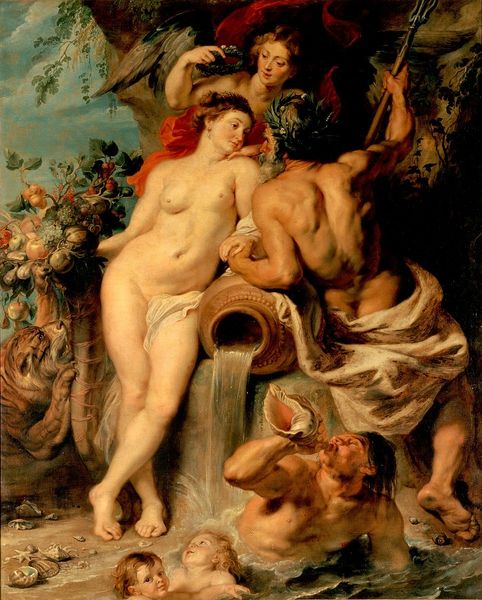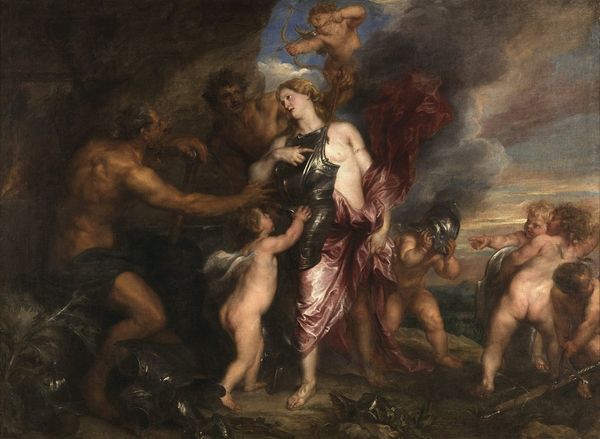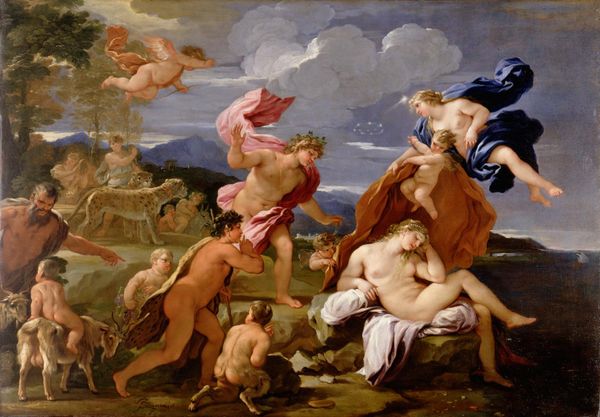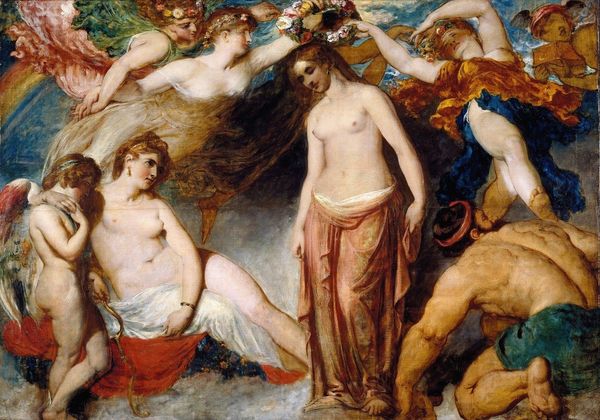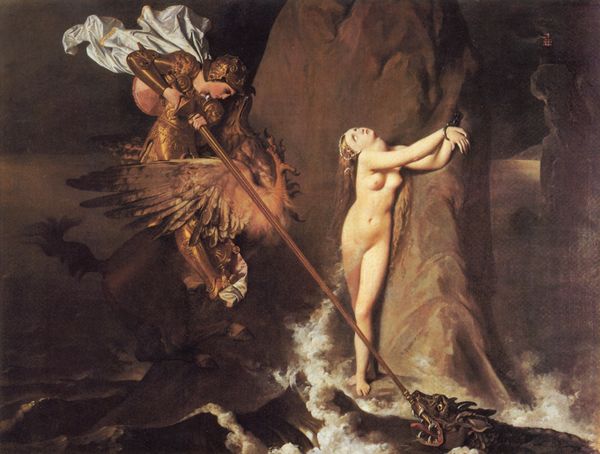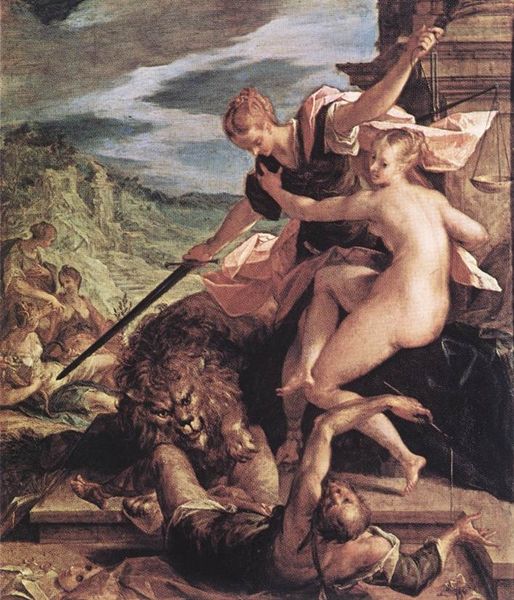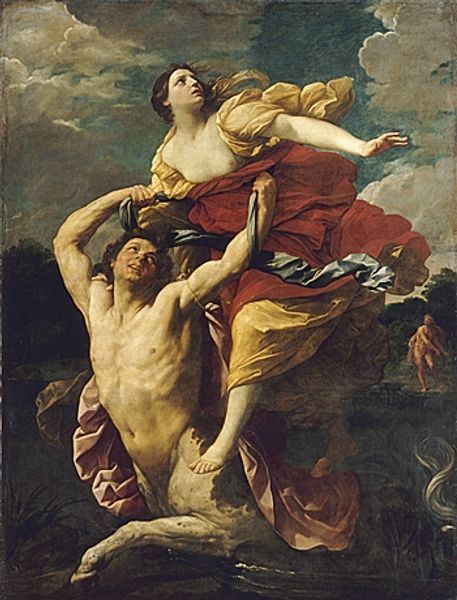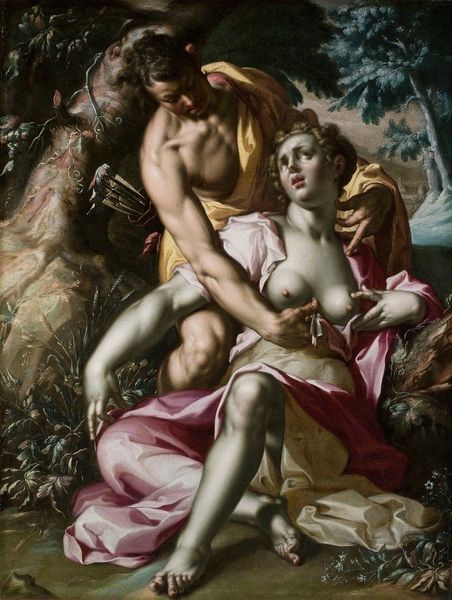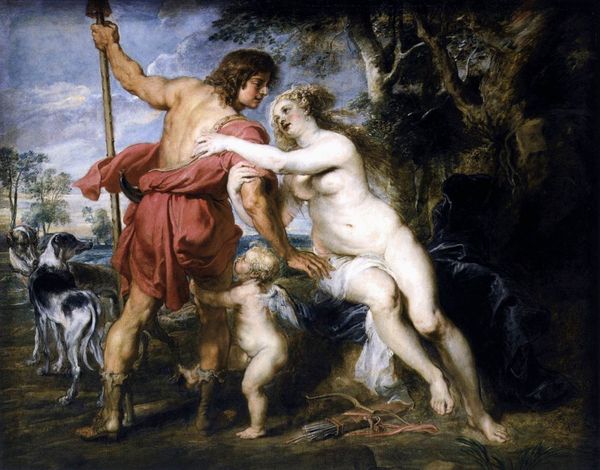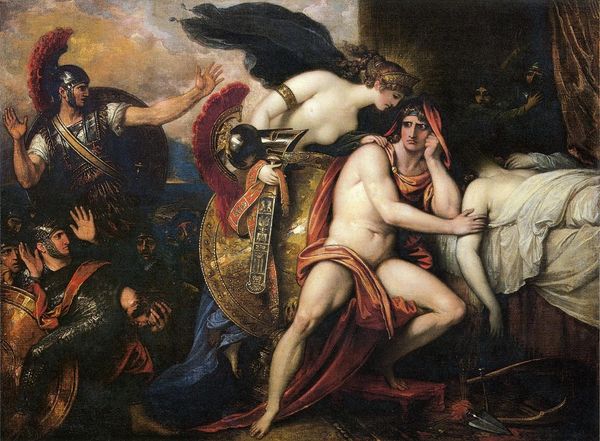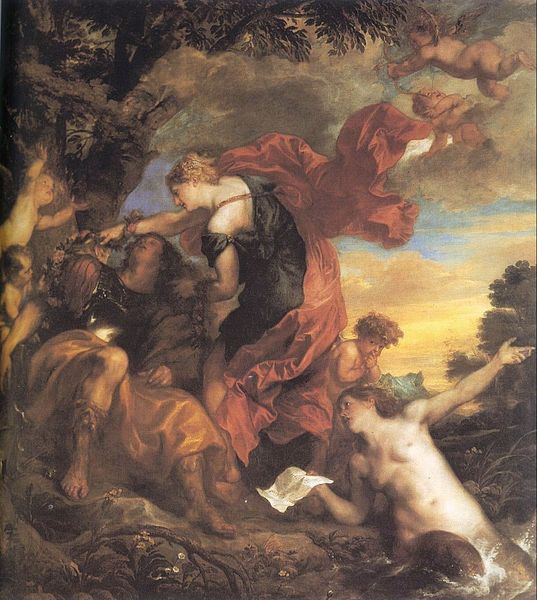
painting, oil-paint
#
allegory
#
baroque
#
painting
#
oil-paint
#
figuration
#
oil painting
#
group-portraits
#
animal portrait
#
mythology
#
genre-painting
#
history-painting
#
nude
Dimensions: 249 x 296 cm
Copyright: Public domain
Curator: Here we have Peter Paul Rubens's monumental oil on canvas, "Juno and Argus," completed around 1611. It’s currently housed here at the Wallraf-Richartz Museum. Editor: The immediate impression is… dramatic. A collision of textures and bodies, all swirling around a central axis. A rather unsettling abundance. Curator: Let's unpack that abundance. Rubens, known for his workshop practice, no doubt employed assistants in layering pigment to achieve these shimmering surfaces. Look at Juno’s elaborate gown, a clear symbol of her elevated status, set against the very tangible textures of Argus' skin and the peacock feathers. We also see Rubens engage with classical allegory here. What can you tell us about how that might connect to production during the Baroque? Editor: Juno, the Roman Queen of the Gods, occupies a position of compositional and symbolic power. The diagonal lines lead the eye directly to her and connect to Argus who now lies lifeless beneath her chariot. The artist strategically organizes color, light, and form to communicate themes of power and mythological narrative within its representational structure. Curator: Exactly, and we must consider the commission. It suggests that this theatrical portrayal of a mythological scene reflects the patrons’ taste for lavish display. Rubens skillfully catered to the market’s demand for grand, allegorical works. Argus's death can be examined not only in relation to Juno’s power, but also regarding the contemporary audiences who saw stories of divine authority, and human submission to said power, as aesthetically, socially, and economically important. Editor: Yes, but let's go back to the formal qualities. That dynamic composition. The cascading bodies. The contrast between the cool tones of the landscape and the warm flesh tones... it generates tension and embodies the aesthetic sensibilities of the Baroque era itself. The use of line, form, and color contributes to a dramatic experience, guiding us through the narrative as he renders complex emotion into a visually stunning experience. Curator: So, we’re both agreeing on a point. Through his manipulation of materials and by strategically referencing existing power structures, Rubens crafted an emotionally engaging image, successfully satisfying both his patrons' desires and pushing the boundaries of Baroque painting conventions. Editor: Precisely, and Rubens used those artistic skills to create a representation that elevates the aesthetic experience beyond mere narrative depiction, engaging the viewer on multiple sensory and intellectual levels. A convergence of artifice and experience.
Comments
No comments
Be the first to comment and join the conversation on the ultimate creative platform.
